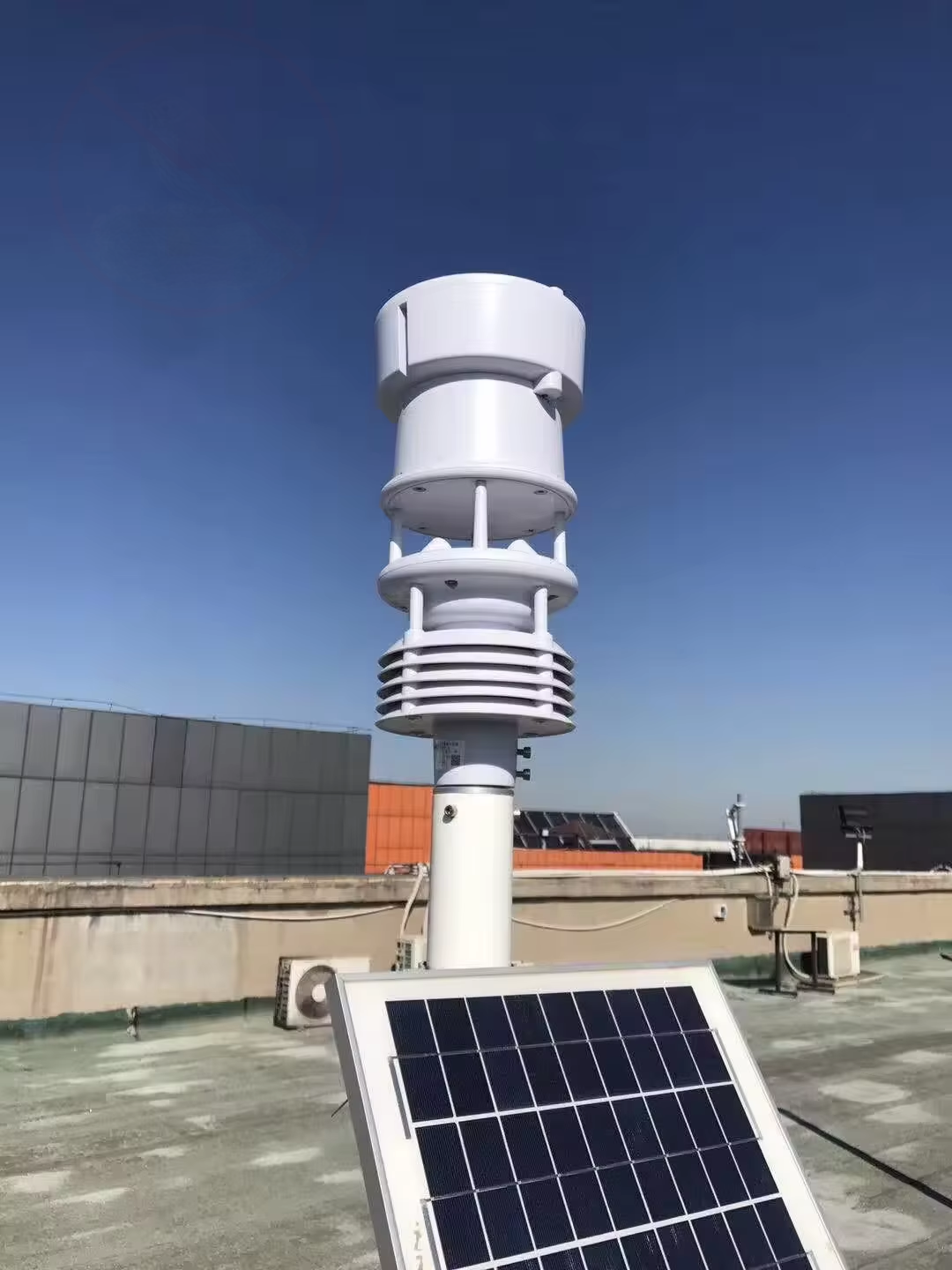Janubiy Amerikada Amazon tropik o'rmonlaridan And tog'larigacha bo'lgan keng Pampasgacha bo'lgan turli xil iqlim va geografik sharoitlar mavjud. Qishloq xoʻjaligi, energetika va transport kabi tarmoqlar meteorologik maʼlumotlarga tobora koʻproq bogʻliq. Meteorologik ma'lumotlarni yig'ishning asosiy vositasi sifatida meteorologik stantsiyalar Janubiy Amerikada tobora ko'proq foydalanilmoqda. Harorat, yog'ingarchilik, shamol tezligi va namlik kabi meteorologik parametrlarni real vaqt rejimida kuzatib borish orqali meteorologik stansiyalar qishloq xo'jaligi ishlab chiqarishi, ofatlar haqida ogohlantirish, suv resurslarini boshqarish va boshqa sohalarda muhim yordam beradi.
1.Meteorologik stansiyalarning vazifalari va afzalliklari
Meteorologik stansiya - bu meteorologik ma'lumotlarni kuzatish va qayd etish uchun ishlatiladigan qurilma, odatda quyidagi funktsiyalarni o'z ichiga oladi:
Ko'p parametrli monitoring: harorat, yog'ingarchilik, shamol tezligi, shamol yo'nalishi, namlik, havo bosimi va quyosh radiatsiyasi kabi bir nechta meteorologik parametrlarni real vaqtda kuzatishi mumkin.
Ma'lumotlarni yozib olish va uzatish: Meteorologik stansiya avtomatik ravishda ma'lumotlarni yozib olishi va oson tahlil qilish va almashish uchun simsiz tarmoq orqali markaziy ma'lumotlar bazasi yoki bulutli platformaga ma'lumotlarni uzatishi mumkin.
Yuqori aniqlik va real vaqtda: Zamonaviy meteorologik stantsiyalar real vaqtda va aniq meteorologik ma'lumotlarni taqdim etish uchun yuqori aniqlikdagi sensorlardan foydalanadi.
Masofaviy monitoring: Internet orqali foydalanuvchilar real vaqt rejimida monitoring va erta ogohlantirish uchun meteorologik stantsiya ma'lumotlariga masofadan kirishlari mumkin.
Janubiy Amerikada ob-havo stantsiyalarini qo'llash quyidagi afzalliklarga ega:
Aniq qishloq xo'jaligini qo'llab-quvvatlash: ekish va sug'orish rejalarini optimallashtirishga yordam berish uchun fermerlarga aniq ob-havo ma'lumotlarini taqdim eting.
Tabiiy ofat haqida ogohlantirish: tabiiy ofatlarning oldini olish va favqulodda vaziyatlarga javob berish uchun asos yaratish uchun kuchli yomg'ir, qurg'oqchilik, bo'ronlar va boshqalar kabi ekstremal ob-havo hodisalarini real vaqt rejimida kuzatish.
Suv resurslarini boshqarish: yog'ingarchilik va bug'lanishni kuzatish, suv omborlarini boshqarish va sug'orish jadvalini tuzishni qo'llab-quvvatlash.
Ilmiy tadqiqotlar: iqlim tadqiqotlari va atrof-muhitni muhofaza qilish uchun uzoq muddatli va uzluksiz meteorologik ma'lumotlarni taqdim etish.
2. Janubiy Amerikada ariza berish holatlari
2.1 Ilova foni
Janubiy Amerikadagi iqlim murakkab va xilma-xil bo'lib, ba'zi hududlar ko'pincha Amazonkadagi kuchli yomg'ir, And tog'larida sovuq va Pampasdagi qurg'oqchilik kabi ekstremal ob-havo hodisalaridan ta'sirlanadi. Meteorologik stansiyalardan foydalanish ushbu mintaqalar uchun muhim meteorologik ma'lumotlarni qo'llab-quvvatlaydi, qishloq xo'jaligi, energetika va transport kabi sohalarga iqlim o'zgarishi muammolarini engishda yordam beradi.
2.2 Maxsus qo'llash holatlari
1-holat: Braziliyada aniq qishloq xo'jaligida ob-havo stantsiyalarini qo'llash
Braziliya dunyodagi qishloq xo'jaligi mahsulotlarining muhim eksportchisi bo'lib, qishloq xo'jaligi asosan meteorologik ma'lumotlarga tayanadi. Braziliyaning Mato Grosso shahrida soya va makkajo'xori yetishtiruvchilar meteorologik stansiyalarni joylashtirish orqali qishloq xo'jaligini aniq boshqarishga erishdilar. Maxsus ilovalar quyidagilardan iborat:
Joylashtirish usuli: Har 10 kvadrat kilometrda bitta stantsiya o'rnatilgan qishloq xo'jaligi erlarida avtomatik ob-havo stantsiyalarini o'rnating.
Monitoring parametrlari: harorat, yog'ingarchilik, namlik, shamol tezligi, quyosh radiatsiyasi va boshqalar.
Ilova effekti:
Fermerlar suv isrofgarchiligini kamaytirish uchun real vaqt rejimidagi meteorologik ma'lumotlarga asoslanib ekish va sug'orish vaqtlarini sozlashlari mumkin.
Yomg'ir va qurg'oqchilikni bashorat qilish orqali hosildorlikni oshirish uchun o'g'itlash va zararkunandalarga qarshi kurash rejalarini optimallashtiring.
2020 yilda Mato Grossoda soya ishlab chiqarish aniq meteorologik ma'lumotlardan foydalanish hisobiga qariyb 12 foizga oshdi.
2-holat: Peru And tog'laridagi ob-havo stantsiyalari tarmog'i
Peru And tog'lari muhim kartoshka va makkajo'xori ekish maydonidir, ammo mintaqa tez-tez sovuq va qurg'oqchilik bilan o'zgaruvchan iqlimga ega. Peru hukumati mahalliy qishloq xo'jaligi rivojlanishini qo'llab-quvvatlash uchun And tog'larida ob-havo stantsiyalari tarmog'ini yaratish uchun ilmiy tadqiqot muassasalari bilan hamkorlik qildi. Maxsus ilovalar quyidagilardan iborat:
Joylashtirish usuli: yirik qishloq xo'jaligi hududlarini qamrab olish uchun baland tog'li hududlarda kichik ob-havo stantsiyalarini o'rnating.
Monitoring parametrlari: harorat, yog'ingarchilik, shamol tezligi, muzlashdan ogohlantirish va boshqalar.
Ilova effekti:
Fermerlar o‘z mobil telefonlari orqali ob-havo stansiyalari tomonidan e’lon qilingan sovuq haqida ogohlantirish olishlari, o‘z vaqtida himoya choralarini ko‘rishlari va hosilning nobud bo‘lishini kamaytirishlari mumkin.
Meteorologik ma'lumotlar sug'orish rejalarini optimallashtirishga va qurg'oqchilikning qishloq xo'jaligiga ta'sirini yumshatishga yordam beradi.
2021-yilda viloyatda kartoshka yetishtirish meteostansiyalarni qo‘llash hisobiga 15 foizga oshdi.
3-holat: Argentinaning Pampaslarida ob-havo stantsiyalarini qo'llash
Argentinaning Pampalari Janubiy Amerikadagi muhim chorvachilik va g'allachilik hududidir, ammo mintaqa ko'pincha qurg'oqchilik va toshqinlardan ta'sirlanadi. Argentina Milliy meteorologiya xizmati qishloq xo'jaligi va chorvachilikni qo'llab-quvvatlash uchun Pampasda zich ob-havo stantsiyalarini o'rnatdi. Maxsus ilovalar quyidagilardan iborat:
Joylashtirish usuli: Har 20 kvadrat kilometrda bitta stantsiya joylashtiriladigan o'tloqlar va qishloq xo'jaligi erlarida avtomatik ob-havo stantsiyalarini o'rnating.
Monitoring parametrlari: yog'ingarchilik, harorat, namlik, shamol tezligi, bug'lanish va boshqalar.
Ilova effekti:
Chorvadorlar ekstremal ob-havo sharoitida chorva mollariga zarar etkazmaslik uchun meteorologik ma'lumotlarga asoslanib yaylov rejalarini o'zgartirishi mumkin.
Fermerlar bug'doy va makkajo'xori hosildorligini oshirish uchun sug'orish va ekish vaqtlarini optimallashtirish uchun yog'ingarchilik ma'lumotlaridan foydalanadilar.
2022-yilda Pampasda g‘alla hosildorligi meteorologik stansiyalarni qo‘llash hisobiga 8 foizga oshdi.
4-holat: Chili vino hududlarida ob-havo stantsiyalarini qo'llash
Chili Janubiy Amerikada muhim vino ishlab chiqaruvchisi bo'lib, uzum etishtirish iqlim sharoitlariga juda sezgir. Chilining markaziy vodiysi hududida vinochilik korxonalari meteorologik stansiyalarni joylashtirish orqali uzum yetishtirishni mukammal boshqarishga erishdilar. Maxsus ilovalar quyidagilardan iborat:
Joylashtirish usuli: Uzumzorda har 5 gektarda bitta stantsiya joylashtiriladigan mikro ob-havo stantsiyalarini o'rnating.
Monitoring parametrlari: harorat, namlik, yog'ingarchilik, quyosh radiatsiyasi, muzlashdan ogohlantirish va boshqalar.
Ilova effekti:
Sharob zavodlari uzum sifatini yaxshilash uchun meteorologik ma'lumotlar asosida sug'orish va o'g'itlash rejalarini o'zgartirishi mumkin.
Sovuqdan ogohlantirish tizimi vinochilik korxonalariga uzumzorlarni sovuqdan himoya qilish uchun o'z vaqtida choralar ko'rishga yordam beradi.
2021 yilda Chili markaziy vodiysida vino hosildorligi va sifati ob-havo stantsiyalarini qo'llash tufayli sezilarli darajada yaxshilandi.
3. Xulosa
Janubiy Amerikada meteorologik stansiyalarni qo'llash qishloq xo'jaligi, chorvachilik, suv resurslarini boshqarish va boshqa sohalar uchun muhim ma'lumotlar bilan ta'minlaydi, iqlim o'zgarishi bilan bog'liq muammolarni engishga yordam beradi. Real vaqt rejimida monitoring va ma'lumotlarni tahlil qilish orqali meteorologik stansiyalar nafaqat ishlab chiqarish samaradorligi va resurslardan foydalanishni yaxshilaydi, balki tabiiy ofatdan ogohlantirish va ilmiy tadqiqotlar uchun kuchli vositalarni ham taqdim etadi. Kelajakda texnologiyaning rivojlanishi va qo'llanilishini rag'batlantirish bilan Janubiy Amerikadagi meteorologik stantsiyalarni qo'llash istiqbollari yanada kengroq bo'ladi.
Xabar vaqti: 2025-yil 18-fevral


